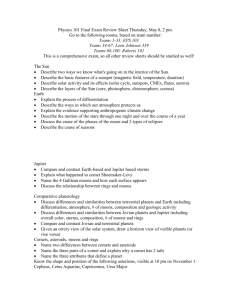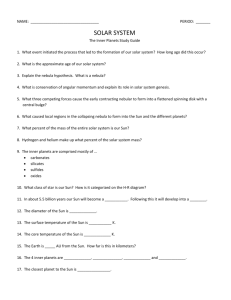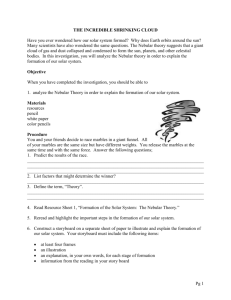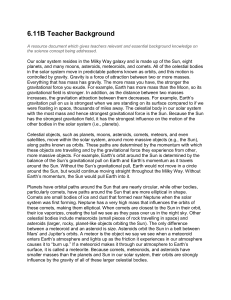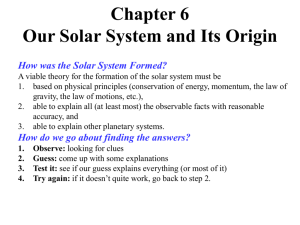Chapter 25 Study Guide (TEST is on WEDNESDAY)
advertisement
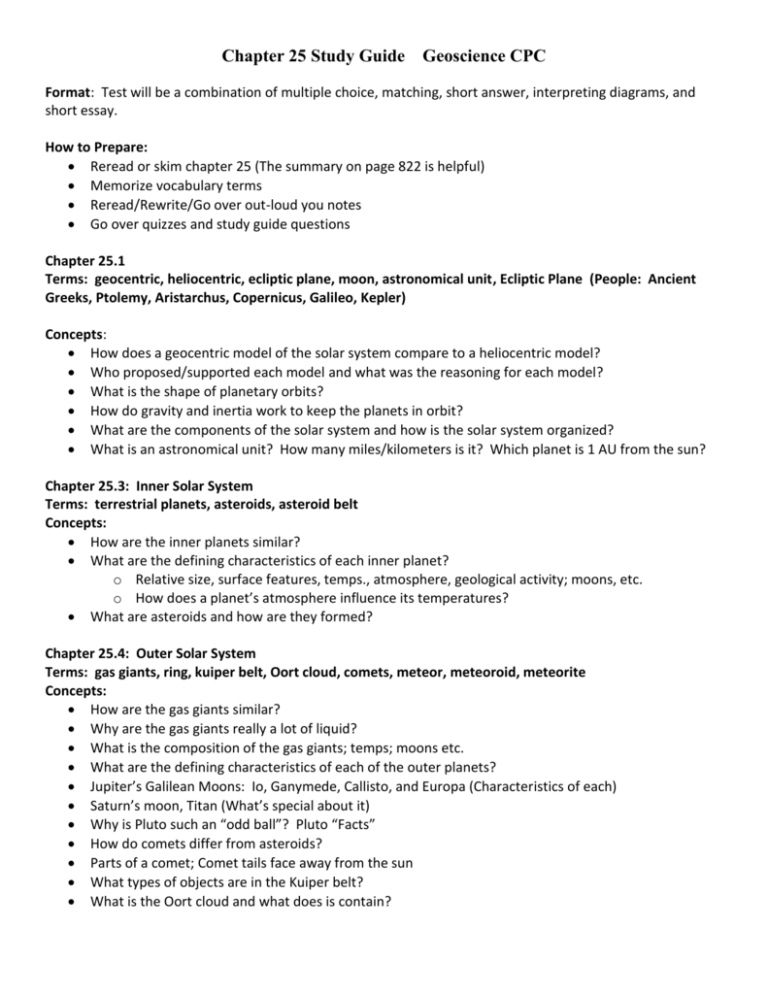
Chapter 25 Study Guide Geoscience CPC Format: Test will be a combination of multiple choice, matching, short answer, interpreting diagrams, and short essay. How to Prepare: Reread or skim chapter 25 (The summary on page 822 is helpful) Memorize vocabulary terms Reread/Rewrite/Go over out-loud you notes Go over quizzes and study guide questions Chapter 25.1 Terms: geocentric, heliocentric, ecliptic plane, moon, astronomical unit, Ecliptic Plane (People: Ancient Greeks, Ptolemy, Aristarchus, Copernicus, Galileo, Kepler) Concepts: How does a geocentric model of the solar system compare to a heliocentric model? Who proposed/supported each model and what was the reasoning for each model? What is the shape of planetary orbits? How do gravity and inertia work to keep the planets in orbit? What are the components of the solar system and how is the solar system organized? What is an astronomical unit? How many miles/kilometers is it? Which planet is 1 AU from the sun? Chapter 25.3: Inner Solar System Terms: terrestrial planets, asteroids, asteroid belt Concepts: How are the inner planets similar? What are the defining characteristics of each inner planet? o Relative size, surface features, temps., atmosphere, geological activity; moons, etc. o How does a planet’s atmosphere influence its temperatures? What are asteroids and how are they formed? Chapter 25.4: Outer Solar System Terms: gas giants, ring, kuiper belt, Oort cloud, comets, meteor, meteoroid, meteorite Concepts: How are the gas giants similar? Why are the gas giants really a lot of liquid? What is the composition of the gas giants; temps; moons etc. What are the defining characteristics of each of the outer planets? Jupiter’s Galilean Moons: Io, Ganymede, Callisto, and Europa (Characteristics of each) Saturn’s moon, Titan (What’s special about it) Why is Pluto such an “odd ball”? Pluto “Facts” How do comets differ from asteroids? Parts of a comet; Comet tails face away from the sun What types of objects are in the Kuiper belt? What is the Oort cloud and what does is contain? Chapter 25.5: The Origin of the Solar System Terms: solar nebula, protoplanetary disc, planetesimals, accretion Essay Question: Describe how our solar system formed from a cloud of dust & gas. Use key vocabulary words and diagrams. Concepts: What is the nebular theory? What had to happen inside the nebula for our sun to form? Describe the process by which planets formed in the protoplanetary disk. What evidence supports the nebular theory?

